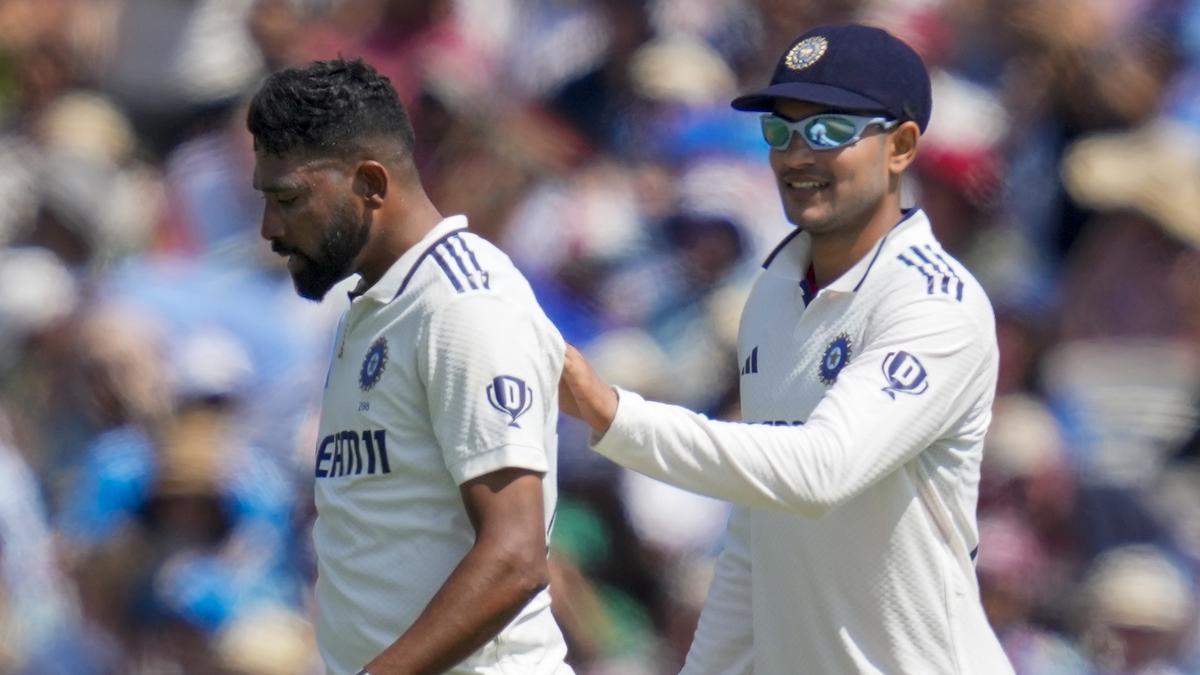 |
|
The fourth day of the third Test between India and England witnessed a compelling morning session dominated by the Indian bowlers, particularly Mohammed Siraj, who spearheaded the attack with two crucial wickets. England, resuming their second innings at a precarious 2 for no loss, found themselves reeling at 98 for 4 by lunch, a testament to the relentless pressure exerted by the Indian bowling unit. The early dismissal of Ben Duckett set the tone for the session, as he mistimed a pull shot off Siraj, gifting a catch to Jasprit Bumrah stationed at mid-on. Duckett's departure for a meager 12 runs marked the beginning of England's struggles against the disciplined Indian attack. Following Duckett's dismissal, Siraj continued his impressive spell, trapping Ollie Pope lbw with a delivery that seamed in sharply. The decision, initially turned down by the on-field umpire, was overturned after India opted for a review, highlighting their confidence in the bowler's assessment and the accuracy of the technology. Pope's dismissal for just 4 runs further compounded England's woes, leaving them tottering at 42 for 2. The Indian bowlers maintained tight lines and lengths, making it difficult for the English batsmen to score freely. The seam movement and subtle variations in pace kept the batsmen guessing, resulting in a series of tentative strokes and ultimately, wickets. Nitish Kumar Reddy, making a significant contribution, dismissed Zak Crawley for the second time in the match, inducing a loose drive that was comfortably taken by Yashasvi Jaiswal at gully. Crawley's dismissal was a significant blow to England's hopes of building a substantial lead, as he is a key member of their batting lineup. The consistent pressure applied by the Indian bowlers eventually led to another breakthrough, with Akash Deep striking before lunch. He bowled Harry Brook for 23, exploiting his eagerness to score with an attempted swipe across the line, exposing his middle stump. Brook's dismissal further dented England's batting resilience and underscored the effectiveness of the Indian bowling attack. The fact that India had managed to match England's first-innings total of 387, achieved on Friday, added further weight to their dominant performance in the morning session. The parity in the first innings meant that every run England managed to score in their second innings would be crucial in determining the outcome of the match. The Indian bowlers' ability to restrict England's scoring and pick up wickets at regular intervals placed them in a commanding position as they headed into the lunch break. The key to India's success lay in their disciplined bowling approach and their ability to exploit the conditions on offer. The bowlers bowled with accuracy and consistency, targeting the batsmen's weaknesses and creating opportunities for wickets. The fielding unit also played a vital role, supporting the bowlers with sharp catches and preventing easy runs. The pressure applied by the Indian team was palpable, creating a sense of unease among the English batsmen and ultimately leading to their downfall. England's batting woes were further exacerbated by their inability to build partnerships. The dismissals of key batsmen like Duckett, Pope, Crawley, and Brook in quick succession prevented them from establishing any momentum and put immense pressure on the remaining batsmen. The Indian bowlers, on the other hand, were able to maintain control throughout the session, preventing the English batsmen from settling down and dictating terms. The second session would be critical for England to try to build a respectable lead. They would need Joe Root and other batsmen to dig deep and forge a solid partnership to salvage the innings. However, with the Indian bowlers in such impressive form, it would be a daunting task for the English batsmen to overcome the challenges and turn the tide in their favor. The Indian team, buoyed by their dominant performance in the morning session, would be looking to continue their momentum and further tighten their grip on the match. They would need to maintain their disciplined bowling approach, exploit any weaknesses in the English batting lineup, and capitalize on any opportunities that come their way. The match was finely poised, and the outcome would depend on which team could maintain their composure and execute their plans effectively. The atmosphere in the stadium was electric, with the Indian fans roaring their support for their team. The chants and cheers reverberated around the ground, creating a sense of excitement and anticipation. The players responded to the support with their spirited performances, showcasing their skills and determination. The game of cricket is known for its unpredictable nature, and anything is possible. However, based on the events of the morning session, India had clearly gained the upper hand and were in a strong position to dictate the course of the match. The momentum was firmly with them, and they would be looking to capitalize on their advantage and secure a comprehensive victory. The contributions from Mohammed Siraj, Nitish Kumar Reddy and Akash Deep were critical and they will be hoping to continue their form. The pressure is now on the English team to come back and turn the tide of the test. This will require solid batting performances to come.
Source: IND vs ENG Test Day 4: Siraj strikes twice, England 98/4 at lunch
